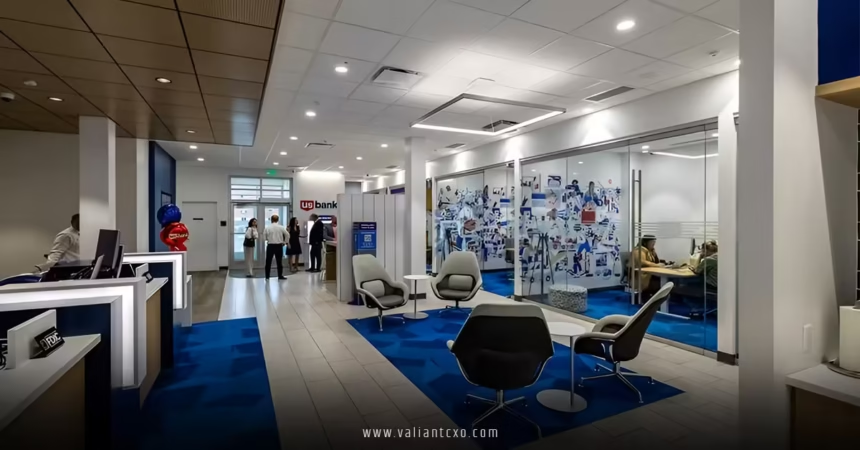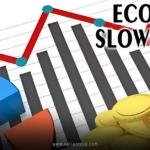The Decline of Physical Bank Branches in America is reshaping how we interact with financial institutions. Picture this: not too long ago, a trip to the bank meant walking into a brick-and-mortar building, chatting with a teller, and maybe even sipping coffee while discussing a loan. Today, that scene feels like a nostalgic postcard from a bygone era. With digital banking apps, ATMs, and online platforms taking center stage, physical bank branches are closing at a staggering rate. But why is this happening? What does it mean for you, me, and the future of banking? Let’s dive into the forces driving The Decline of Physical Bank Branches in America and explore what’s at stake.
Why Are Physical Bank Branches Disappearing?
The Rise of Digital Banking
Imagine banking as a bustling city street. Once, it was lined with grand bank buildings, their doors swinging open for every transaction. Now, that street is quieter, with smartphones acting like sleek, modern highways diverting traffic. The rise of digital banking is a key driver of The Decline of Physical Bank Branches in America. Mobile apps let you deposit checks with a snap of your phone, transfer money in seconds, and even apply for loans without leaving your couch. Why trek to a branch when your bank lives in your pocket?
Banks have leaned hard into this digital revolution. Major players like JPMorgan Chase and Bank of America have invested billions in user-friendly apps and online platforms. These tools aren’t just convenient—they’re cost-effective. Maintaining a physical branch involves rent, utilities, and staff salaries. Digital platforms? They’re a fraction of the cost. No wonder banks are rethinking their physical footprints.
Economic Pressures and Cost-Cutting
Running a bank branch isn’t cheap. Think of it like keeping a vintage car on the road—charming, but the maintenance costs add up. The Decline of Physical Bank Branches in America is also fueled by economic pressures. After the 2008 financial crisis, banks faced tighter regulations and slimmer profit margins. To stay competitive, many slashed expenses, and physical branches were an easy target.
Between 2014 and 2018, the number of bank branches in the U.S. dropped by about 7%, with thousands of locations shuttered. Big banks like Bank of America closed over 600 branches during that period, while Citibank saw a whopping 25% decline in its branch network. These closures weren’t random—they were strategic moves to cut costs while redirecting resources to digital channels. But at what cost to customers?
Changing Consumer Behavior
Let’s be real: when was the last time you needed to visit a bank branch? For many, it’s been months, maybe years. The Decline of Physical Bank Branches in America mirrors a shift in how we handle money. Millennials and Gen Z, in particular, are digital natives who’d rather tap an app than stand in line. Even older generations are warming up to online banking, with many mastering mobile deposits during the COVID-19 pandemic.
This shift isn’t just about convenience. It’s about trust in technology. Today’s consumers expect instant access to their finances, whether they’re buying coffee or applying for a mortgage. Physical branches, with their limited hours and occasional lines, can’t always keep up. As a result, banks are following the crowd, prioritizing digital tools over physical spaces.
The Impact of The Decline of Physical Bank Branches in America
Banking Deserts: A Growing Concern
Picture a small town with no grocery store for miles. Now imagine that town losing its only bank branch. That’s what’s happening in some communities, creating what experts call “banking deserts.” The Decline of Physical Bank Branches in America has left millions—especially in rural and low-income areas—without easy access to in-person banking. According to a Federal Reserve study, over 12 million Americans live in areas where the nearest branch is more than 10 miles away in rural regions or two miles in cities.
These banking deserts hit vulnerable populations hardest. Older adults, small business owners, and those with limited internet access rely on branches for cash deposits, financial advice, or complex transactions like mortgage applications. Without a nearby branch, they’re forced to travel long distances or navigate digital platforms that may feel alien. Is this progress, or are we leaving people behind?
The Human Touch: Still in Demand?
Here’s a question: can an app replace a friendly conversation with a banker? For some, the answer is a resounding no. The Decline of Physical Bank Branches in America has sparked concerns about losing the human connection that branches provide. Sure, digital banking is slick, but it can’t replicate the trust built when you sit across from someone discussing your financial future.
Take wealth management or small business loans—services that often require nuanced discussions. A 2020 Deloitte survey found that 65% of Americans prefer visiting a branch when applying for a mortgage, and 58% want in-person help to open a checking account. Even in a digital age, there’s something reassuring about a handshake and a smile. Banks are starting to notice, with some rethinking closures to maintain that personal touch.
Economic Ripple Effects
The Decline of Physical Bank Branches in America isn’t just about banking—it’s about communities. When a branch closes, it’s not just tellers who lose jobs. Local economies feel the pinch. Fewer branches mean fewer customers popping into nearby coffee shops or stores. In small towns, a bank closure can feel like losing a community anchor, leaving empty storefronts and a sense of abandonment.
On the flip side, banks argue that redirecting funds from branches to digital platforms creates new opportunities. Tech investments can lead to better services, like AI-powered budgeting tools or fraud detection systems. But for every sleek app, there’s a community wondering if the trade-off is worth it.
Are Physical Branches Making a Comeback?
A Shift Toward “Financial Centers”
Here’s a plot twist: The Decline of Physical Bank Branches in America might be slowing. In 2023, U.S. banks added more net new branches for the first time in a decade, signaling a shift. But these aren’t your grandma’s bank branches. Banks like Bank of America and JPMorgan Chase are opening “financial centers”—modern spaces designed for advice and relationship-building, not just transactions.
Think of these as coffee shops for your finances. Bank of America plans to open 165 new financial centers by 2026, focusing on wealth management and small business services. JPMorgan Chase is eyeing 500 new locations by 2027, targeting cities like Boston and Charlotte. These spaces ditch traditional teller lines for collaborative areas where you can sit with a financial advisor. Is this the future of banking, or a nostalgic nod to the past?
The Role of Community-Focused Banking
Some banks are doubling down on community ties to counter The Decline of Physical Bank Branches in America. Citizens Bank, for example, is “rightsizing” its branches into smaller, welcoming spaces that prioritize personalized advice. These branches aim to be community hubs, hosting financial literacy workshops or small business seminars. It’s like turning a bank into a neighborhood hangout—less sterile, more human.
This approach makes sense. Branches remain a key way to attract new customers, especially for complex products like mortgages or investment accounts. By blending digital efficiency with in-person warmth, banks hope to strike a balance that keeps customers coming back.
How Banks Are Adapting to The Decline of Physical Bank Branches in America
Investing in Technology
Banks aren’t just closing branches—they’re reinventing how they serve you. The Decline of Physical Bank Branches in America has pushed banks to pour money into tech. AI chatbots, mobile apps, and video banking are becoming the norm. Ever tried chatting with a virtual assistant about your account balance? It’s not perfect, but it’s getting eerily close to a real conversation.
These investments aren’t just about replacing branches. They’re about meeting you where you are. Whether it’s a budgeting tool that nudges you to save or a video call with a loan officer, banks are using tech to stay relevant. The catch? Not everyone has reliable internet or the tech savvy to keep up, which brings us back to those banking deserts.
The Universal Banker Model
Say goodbye to the traditional teller. The Decline of Physical Bank Branches in America has given rise to the “universal banker”—a jack-of-all-trades who can handle everything from deposits to financial planning. This model cuts costs by reducing staff while offering a more personalized experience. It’s like having a financial Swiss Army knife at your local branch.
Banks like U.S. Bank and Truist are training staff to take on these versatile roles, focusing on building relationships rather than just processing transactions. It’s a smart move, but it requires significant investment in training and technology to pull off.
What Does the Future Hold for Physical Bank Branches?
A Hybrid Approach
The Decline of Physical Bank Branches in America doesn’t mean branches are doomed. Instead, we’re heading toward a hybrid model where digital and physical banking coexist. Picture it like a restaurant with dine-in and takeout options—some folks want the full experience, while others just need a quick bite. Banks are learning to cater to both.
In this hybrid world, branches will focus on high-value interactions like financial planning or loan approvals, while routine tasks stay digital. This approach could preserve the best of both worlds, but only if banks prioritize accessibility for all customers.
The Role of Regulation
Regulators are starting to take notice of The Decline of Physical Bank Branches in America. The Financial Services and Markets Bill, for example, gives the FDIC new powers to ensure “access to cash” in communities. This could slow branch closures in underserved areas, forcing banks to balance cost-cutting with social responsibility. Will it be enough to reverse the trend? Probably not, but it’s a step toward ensuring no one gets left behind.
Conclusion
The Decline of Physical Bank Branches in America is more than a trend—it’s a transformation of how we bank. Driven by digital innovation, cost pressures, and changing consumer habits, banks are closing branches at a rapid pace, creating challenges like banking deserts and threatening the human connection many still crave. Yet, there’s hope. New financial centers, community-focused strategies, and hybrid banking models show that physical branches aren’t dead—they’re evolving. As we navigate this shift, banks must balance efficiency with empathy, ensuring everyone has a seat at the financial table. So, next time you tap your banking app or step into a branch, take a moment to appreciate how far we’ve come—and where we’re headed.
FAQs
1. Why is The Decline of Physical Bank Branches in America happening?
The Decline of Physical Bank Branches in America is driven by the rise of digital banking, cost-cutting measures, and changing consumer preferences for online and mobile services over in-person visits.
2. How does The Decline of Physical Bank Branches in America affect rural communities?
Rural areas face “banking deserts,” where branch closures leave residents with limited access to in-person banking, impacting those who rely on branches for cash transactions or financial advice.
3. Are physical bank branches disappearing completely?
No, physical branches aren’t vanishing entirely. The Decline of Physical Bank Branches in America is leading to fewer, but more specialized, “financial centers” focused on advice and complex transactions.
4. What are banks doing to adapt to The Decline of Physical Bank Branches in America?
Banks are investing in digital tools like mobile apps and AI chatbots, adopting the universal banker model, and opening modern financial centers to balance digital and in-person services.
5. Can I still get personalized banking services with fewer branches?
Yes, many banks are countering The Decline of Physical Bank Branches in America by offering video banking, universal bankers, and community-focused financial centers for personalized support.
For More Updates !! : valiantcxo.com


